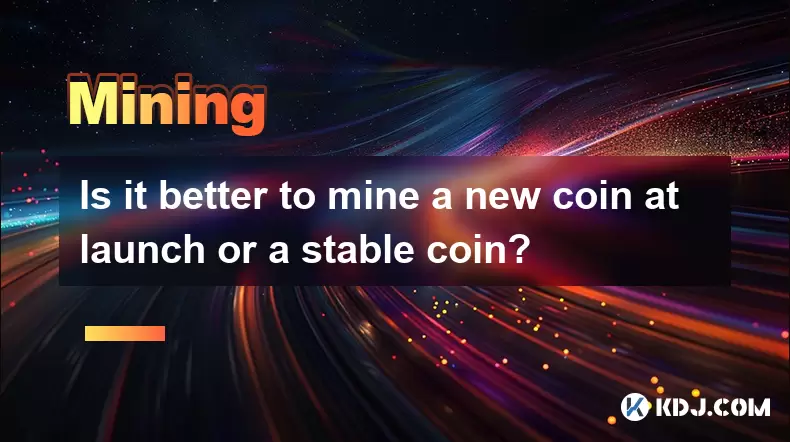-
 Bitcoin
Bitcoin $120400
1.77% -
 Ethereum
Ethereum $3615
7.90% -
 XRP
XRP $3.580
17.84% -
 Tether USDt
Tether USDt $1.001
0.06% -
 BNB
BNB $729.4
1.25% -
 Solana
Solana $179.9
5.04% -
 USDC
USDC $0.0000
0.01% -
 Dogecoin
Dogecoin $0.2311
8.22% -
 TRON
TRON $0.3226
4.04% -
 Cardano
Cardano $0.8490
12.85% -
 Hyperliquid
Hyperliquid $46.45
0.72% -
 Stellar
Stellar $0.4913
8.54% -
 Sui
Sui $4.027
2.00% -
 Chainlink
Chainlink $18.51
11.67% -
 Hedera
Hedera $0.2818
21.51% -
 Avalanche
Avalanche $24.03
7.40% -
 Bitcoin Cash
Bitcoin Cash $508.5
2.90% -
 Shiba Inu
Shiba Inu $0.00001496
3.24% -
 UNUS SED LEO
UNUS SED LEO $8.961
1.83% -
 Toncoin
Toncoin $3.264
3.13% -
 Litecoin
Litecoin $104.6
8.15% -
 Polkadot
Polkadot $4.389
6.11% -
 Uniswap
Uniswap $9.924
10.63% -
 Monero
Monero $337.9
0.49% -
 Pepe
Pepe $0.00001376
2.79% -
 Bitget Token
Bitget Token $4.830
2.46% -
 Ethena USDe
Ethena USDe $1.001
0.05% -
 Dai
Dai $1.000
0.02% -
 Aave
Aave $325.2
1.66% -
 Bittensor
Bittensor $423.7
-0.85%
Is it better to mine a new coin at launch or a stable coin?
Mining new coins offers high-risk, high-reward potential with lower initial difficulty, while stable coins provide steady returns but lack explosive growth opportunities.
Jul 17, 2025 at 10:00 pm

Understanding the Core Differences Between New Coins and Stable Coins
When deciding whether to mine a new coin at launch or a stable coin, it's crucial to understand the fundamental differences between these two types of cryptocurrencies. New coins, especially those launched with initial coin offerings (ICOs) or decentralized launches, often come with high volatility and potential for significant gains. In contrast, stable coins are designed to maintain a consistent value, typically pegged to fiat currencies like the U.S. dollar or backed by commodities.
Mining a new coin can be likened to investing in an early-stage startup, where the risk is high but so is the reward if the project succeeds. On the other hand, mining stable coins offers more predictable returns and lower risk due to their price stability.
Profitability: Potential Gains vs. Predictable Returns
One of the primary considerations when choosing what to mine is profitability. Mining a new coin at launch can offer exponential returns if the project gains traction and its value appreciates rapidly. Early miners benefit from low network difficulty and possibly high block rewards before the coin becomes widely adopted.
- High block rewards are often available during the early stages.
- Low competition means higher chances of securing more blocks.
- Potential for rapid appreciation if the coin gains popularity.
Conversely, mining stable coins may not provide the same level of return on investment. Since their value remains relatively constant, miners earn steady but modest rewards. These coins are ideal for those who prefer a conservative approach and want to avoid market volatility.
Network Difficulty and Accessibility Factors
The network difficulty of a cryptocurrency plays a critical role in determining how easy or hard it is to mine. When a new coin is launched, the network difficulty is usually very low, making it easier for individual miners to participate without requiring expensive hardware.
- Lower entry barriers allow even casual miners to get involved.
- ASIC resistance is common in new coins, favoring GPU miners.
- Quick setup time due to minimal configuration requirements.
Stable coins, especially those built on well-established blockchains like Ethereum, tend to have higher network difficulties. They often require specialized equipment and more technical knowledge to mine effectively. Additionally, many stable coins are not mined at all — they are minted by the issuing organization based on reserve assets.
Risk Assessment: Volatility vs. Stability
Risk tolerance is a key factor when deciding which type of coin to mine. New coins are inherently more volatile. The market can swing drastically within days or even hours, leading to either substantial profits or losses.
- Market sentiment heavily influences new coin prices.
- Regulatory uncertainty poses additional risks.
- Project failure could result in total loss of investment.
In contrast, stable coins are designed to minimize price fluctuations. This makes them safer for miners who wish to accumulate value without worrying about daily price swings. However, this safety comes at the cost of missing out on potentially massive gains.
Hardware and Energy Considerations
The choice between mining a new coin and a stable coin also depends on your hardware capabilities and energy costs. Mining new coins often requires less powerful machines, especially if the algorithm used is resistant to ASICs.
- GPU-friendly algorithms reduce the need for expensive ASICs.
- Lower energy consumption leads to reduced operational costs.
- Flexibility to switch to other projects if needed.
Mining stable coins, particularly those on large networks, may demand high-performance rigs and continuous uptime. This increases both the upfront investment and ongoing expenses such as electricity and cooling.
Community Support and Development Activity
Another important aspect is the community support and development activity behind the coin. A new coin with an active team and engaged community can indicate a promising future, increasing the likelihood of success.
- Active forums and social media presence suggest strong backing.
- Frequent updates and code commits signal ongoing development.
- Community-driven governance models can lead to better decision-making.
Stable coins usually rely on institutional backing rather than community engagement. While this brings stability, it may also limit the influence of individual miners on the direction of the project.
Frequently Asked Questions
Q1: Can I mine stable coins like USDT or USDC?
Most stable coins such as Tether (USDT) and USD Coin (USDC) are not mined. They are issued by centralized entities and backed by reserves. Therefore, traditional mining methods do not apply to them.
Q2: Are there any stable coins that can be mined?
Yes, some stable coins operate on proof-of-work or proof-of-stake blockchains that allow mining or staking. Examples include Carbon (SWTH) and certain algorithmic stablecoins like Empty Set Dollar (ESD), though these are rare and carry unique risks.
Q3: How do I assess the legitimacy of a new coin at launch?
Look for transparent whitepapers, active development repositories, and credible team members. Engage with the community through forums and official communication channels. Avoid coins with anonymous teams or unrealistic promises.
Q4: Is it possible to switch between mining new coins and stable coins?
Technically, yes, provided your mining rig supports multiple algorithms. However, switching frequently may impact profitability due to changes in network difficulty, payout structures, and time spent reconfiguring software.
Disclaimer:info@kdj.com
The information provided is not trading advice. kdj.com does not assume any responsibility for any investments made based on the information provided in this article. Cryptocurrencies are highly volatile and it is highly recommended that you invest with caution after thorough research!
If you believe that the content used on this website infringes your copyright, please contact us immediately (info@kdj.com) and we will delete it promptly.
- Bitcoin, Cloud Mining, Crypto Wealth: Riding the Bull Run in Style
- 2025-07-18 12:30:12
- Ethereum Gas Fees, ERA Airdrop: A New Yorker's Take on Crypto Chaos
- 2025-07-18 12:50:12
- Bitcoin, Altcoins, and the Crypto Market: Navigating Trump's Crypto Ventures and the Evolving Digital Landscape
- 2025-07-18 12:50:12
- Bitcoin Holdings and the Smarter Web: A Match Made in Digital Heaven?
- 2025-07-18 12:10:12
- Bitcoin, MSTR & Saylor's Strategy: A Winning Trifecta?
- 2025-07-18 08:30:13
- Bitcoin Mortgages Down Under: A New Wave in Australian Homeownership?
- 2025-07-18 08:50:12
Related knowledge

How are crypto mining profits taxed?
Jul 14,2025 at 12:28am
Understanding Cryptocurrency Mining and TaxationCryptocurrency mining involves validating transactions on a blockchain network and earning rewards in ...

How to keep a mining rig cool
Jul 12,2025 at 01:42pm
Understanding the Importance of Cooling in Mining RigsCryptocurrency mining is an intensive process that places heavy demand on hardware components, p...

How to mine crypto on a gaming PC
Jul 16,2025 at 12:00pm
What is Crypto Mining on a Gaming PC?Crypto mining involves using your computer's processing power to validate transactions on a blockchain network. A...

How to set up a crypto miner
Jul 16,2025 at 09:14am
Understanding Ethereum Gas Fees: What Are They and How Do They Work?Ethereum gas fees are a fundamental aspect of the network, representing the cost r...

Can you mine crypto on a laptop?
Jul 16,2025 at 02:21am
Is It Feasible to Mine Cryptocurrency on a Laptop?Mining cryptocurrency on a laptop is technically possible, but feasibility depends heavily on the ha...

Is crypto mining worth it?
Jul 16,2025 at 01:21am
Understanding the Basics of Crypto MiningCrypto mining refers to the process of validating transactions on a blockchain network by solving complex mat...

How are crypto mining profits taxed?
Jul 14,2025 at 12:28am
Understanding Cryptocurrency Mining and TaxationCryptocurrency mining involves validating transactions on a blockchain network and earning rewards in ...

How to keep a mining rig cool
Jul 12,2025 at 01:42pm
Understanding the Importance of Cooling in Mining RigsCryptocurrency mining is an intensive process that places heavy demand on hardware components, p...

How to mine crypto on a gaming PC
Jul 16,2025 at 12:00pm
What is Crypto Mining on a Gaming PC?Crypto mining involves using your computer's processing power to validate transactions on a blockchain network. A...

How to set up a crypto miner
Jul 16,2025 at 09:14am
Understanding Ethereum Gas Fees: What Are They and How Do They Work?Ethereum gas fees are a fundamental aspect of the network, representing the cost r...

Can you mine crypto on a laptop?
Jul 16,2025 at 02:21am
Is It Feasible to Mine Cryptocurrency on a Laptop?Mining cryptocurrency on a laptop is technically possible, but feasibility depends heavily on the ha...

Is crypto mining worth it?
Jul 16,2025 at 01:21am
Understanding the Basics of Crypto MiningCrypto mining refers to the process of validating transactions on a blockchain network by solving complex mat...
See all articles

























































































